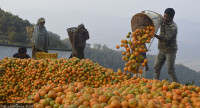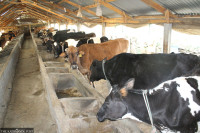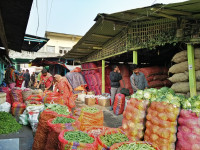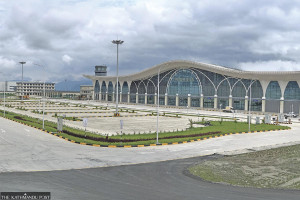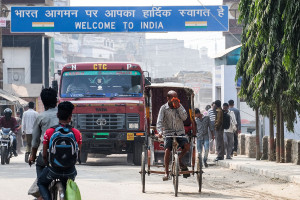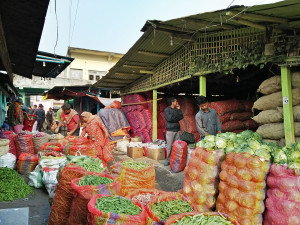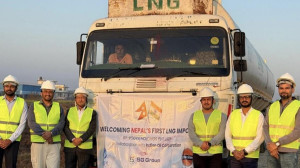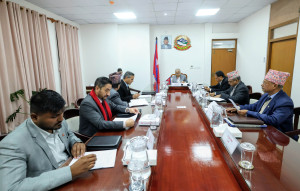Money
Farming sector reels from problems despite significant government investment
Over half of the arable land in Dadeldhura, Doti, Achham, Baitadi, Darchula, Bajhang and Bajura has turned into pastures.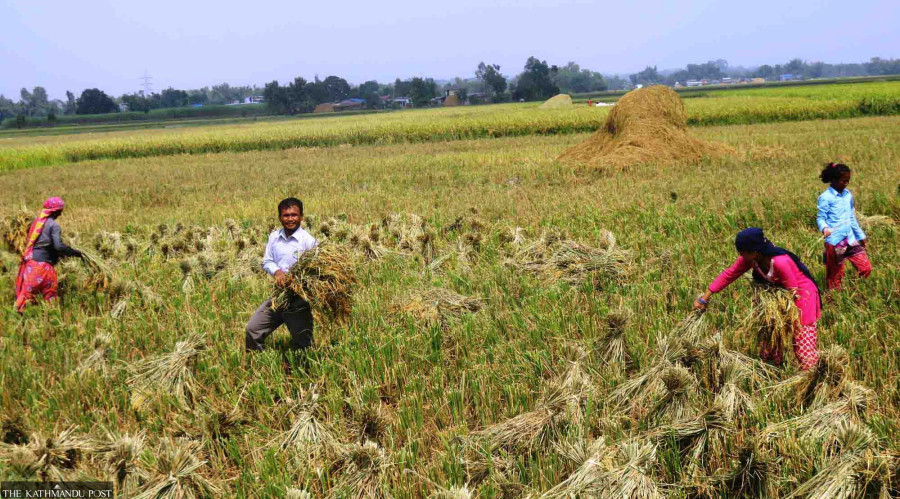
DR Pant
At this time of the year a decade ago, fields on the banks of the Satmola, Ganik and Sunarya rivers in Sudurpaschim province would be crawling with farm hands harvesting winter crops.
Cereals, lentils and green vegetables covered thousands of hectares. The farmers also raised dairy cattle, and they produced enough crops and milk to export to New Delhi, India.
But now a severe labour shortage has crippled the farm sector. Thousands of hectares of land in the breadbasket of far western Nepal lies barren. Youths can hardly be seen in the villages, and the old people can do no more.
More than half of the arable land in Dadeldhura, Doti, Achham, Baitadi, Darchula, Bajhang and Bajura, which once produced high-value crops like soybean, lentil and millet, has now turned into pastures.
According to the Directorate of Agricultural Development of Sudurpaschim province, arable land makes up 220,194 hectares out of the 1.52 million hectares in the seven hill districts of the province.
However, less than 100,000 hectares is utilised, and irrigation is available on only 34,630 hectares.
Lack of manpower and irrigation has made farming unattractive in the province. Locals can make more money by migrating to India seasonally to work.
“The land on the banks of the rivers was most fertile. But it has been left uncultivated due to the absence of manpower,” said Krishna Joshi, a local farmer in Dadeldhura. “The district used to supply farm produce to other regions. Nowadays, farmers buy food from neighbouring districts.”
Joshi said the district was self-sufficient in the production of wheat and mustard oil until a decade ago.
“Those days are gone. The district now imports most of its agricultural needs.”
But government records show increments in agricultural output every year. The land lies uncultivated, but the government has upgraded the crop output data, farmers say.
“We don’t know how this is possible,” said Joshi.
The three tiers of governments are also spending huge amounts of money on the agriculture sector. There are more than three dozen ongoing agriculture projects in the seven hill districts of the province.
Each district has an agriculture knowledge centre, training centre, soil and fertiliser testing centre, plant protection laboratory, seed laboratory and nearly four dozen government-controlled farms.
Around 21 percent of the total budget of the local bodies is spent on agriculture. The provincial government, too, has the second highest spending in agriculture after physical infrastructure development.
The federal government also has provided the highest amount of conditional grants for agriculture in the province.
Despite these investments, the farmlands have turned into barren lands. In the last decade, the province has seen a massive exodus of people.
The local government has been frequently increasing the grants and incentives to promote farming, but no one is interested, farmers say.
Tek Bahadur Bista, the senior agricultural technician, said that agricultural productivity has been increasing despite the decrease in the acreage. “This is because of modern technology, improved varieties of seeds, increase in government investment and commercialised farming system.”
He said that various studies, too, have shown that the average productivity has increased. “In Kailali and Kanchanpur, farm productivity has increased sharply,” added Bista.
The Directorate of Agricultural Development in Dipayal said that around 515,772 tonnes of crops need to be grown annually to feed the 27.49 million people in Sudurpaschim province.
The official data shows that the province is facing a food deficit to the tune of 48,000 tonnes.
The province imported agricultural goods worth more than Rs4 billion via the Gauriphanta customs point in the first seven months of the current fiscal year. The figure could be higher if imports through unofficial channels are counted, insiders say.
According to the statistics, Sudurpashchim province's annual production of paddy amounted to 218,997 tonnes while it produced 265,879 tonnes of wheat and 63,366 tonnes of maize.
The province's annual millet output totalled 13,836 tonnes. Even then, imports have been rising alarmingly. The province is also one of the biggest importers of fruits and vegetables.
Khem Joshi, a researcher at the Rural Development and Research Centre, says the culture of haphazard distribution of grants and faulty agriculture policy has put the agriculture sector in far western Nepal in total disarray.
Joshi says that local leaders and bureaucrats collude with each other and spend most of the budget to benefit their near and dear ones.
Government officials, too, admit that the data about farmlands and agricultural productivity is wrong.
Yagya Raj Joshi, chief of the Directorate of Agricultural Development, said, “There is a difference between government records and the ground reality.”
According to Joshi, there is a mismatch between the records maintained by various government offices.
“We cannot trust anyone. The provincial government has spent more than Rs12 billion on agriculture in the last five years. However, if we calculate the rate of return, the reality might be frightening,” said Joshi.
Officials claim that actual farmers hardly have any access to state subsidies and grants.
“We don’t believe in the rosy data,” Joshi said. “Food imports have more than doubled despite billions of rupees being invested in the farm sector. There is a need for good governance system to improve the agriculture sector.”




 20.12°C Kathmandu
20.12°C Kathmandu
